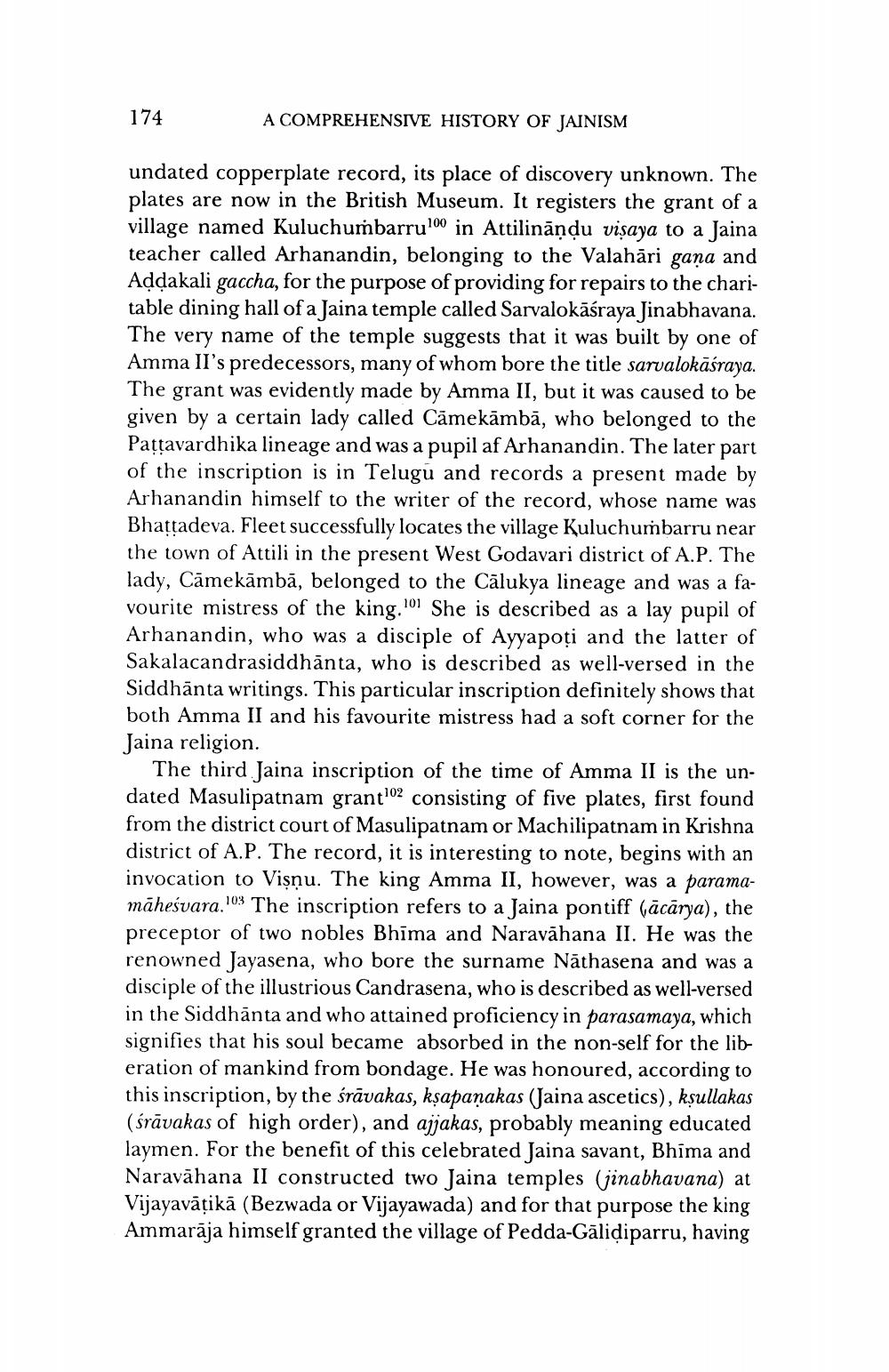________________
174
A COMPREHENSIVE HISTORY OF JAINISM
undated copperplate record, its place of discovery unknown. The plates are now in the British Museum. It registers the grant of a village named Kuluchumbarru100 in Attilināṇḍu visaya to a Jaina teacher called Arhanandin, belonging to the Valahari gana and Adḍakali gaccha, for the purpose of providing for repairs to the charitable dining hall of a Jaina temple called Sarvalokāśraya Jinabhavana. The very name of the temple suggests that it was built by one of Amma II's predecessors, many of whom bore the title sarvalokāśraya. The grant was evidently made by Amma II, but it was caused to be given by a certain lady called Cāmekāmbā, who belonged to the Paṭṭavardhika lineage and was a pupil af Arhanandin. The later part of the inscription is in Telugu and records a present made by Arhanandin himself to the writer of the record, whose name was Bhaṭṭadeva. Fleet successfully locates the village Kuluchumbarru near the town of Attili in the present West Godavari district of A.P. The lady, Camekamba, belonged to the Calukya lineage and was a favourite mistress of the king.101 She is described as a lay pupil of Arhanandin, who was a disciple of Ayyapoți and the latter of Sakalacandrasiddhanta, who is described as well-versed in the Siddhanta writings. This particular inscription definitely shows that both Amma II and his favourite mistress had a soft corner for the Jaina religion.
The third Jaina inscription of the time of Amma II is the undated Masulipatnam grant102 consisting of five plates, first found from the district court of Masulipatnam or Machilipatnam in Krishna district of A.P. The record, it is interesting to note, begins with an invocation to Visņu. The king Amma II, however, was a paramamaheśvara.103 The inscription refers to a Jaina pontiff (ācārya), the preceptor of two nobles Bhima and Naravāhana II. He was the renowned Jayasena, who bore the surname Nathasena and was a disciple of the illustrious Candrasena, who is described as well-versed in the Siddhanta and who attained proficiency in parasamaya, which signifies that his soul became absorbed in the non-self for the liberation of mankind from bondage. He was honoured, according to this inscription, by the śravakas, kṣapanakas (Jaina ascetics), kṣullakas (śrāvakas of high order), and ajjakas, probably meaning educated laymen. For the benefit of this celebrated Jaina savant, Bhima and Naravahana II constructed two Jaina temples (jinabhavana) at Vijayavāțikā (Bezwada or Vijayawada) and for that purpose the king Ammaraja himself granted the village of Pedda-Galiḍiparru, having




